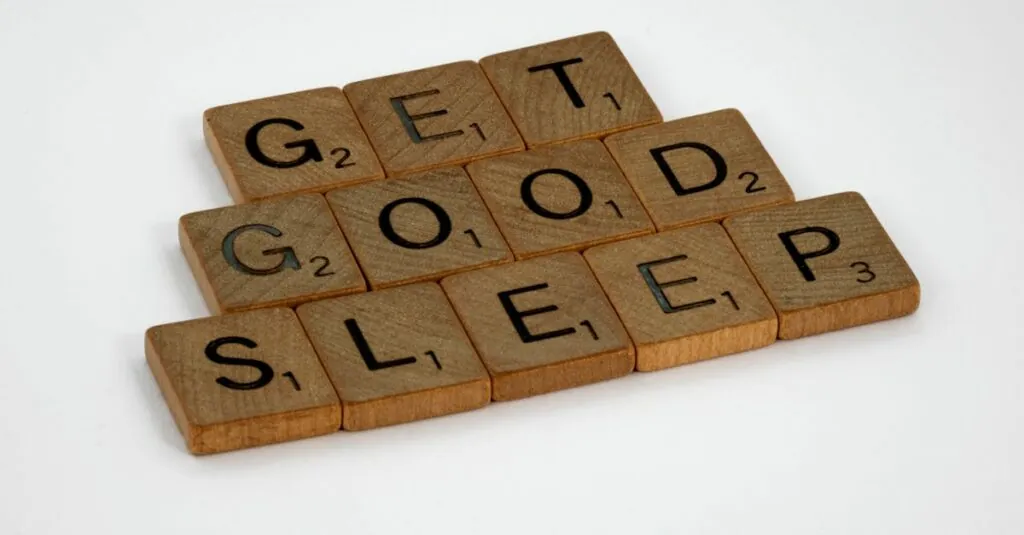In the mystical realm of Dungeons & Dragons, where adventurers face dragons and decipher ancient runes, one spell stands out for its sheer simplicity and effectiveness: the Sleep spell. Imagine being able to tuck your foes into a cozy slumber while you and your party sneak past or prepare for a strategic advantage. It’s like being a magical lullaby artist, but with a bit more flair and a lot less singing.
This spell isn’t just about putting enemies to bed; it’s a game-changer that can turn the tide of battle. Whether you’re a seasoned wizard or a rogue looking to add a touch of mischief to your repertoire, understanding the nuances of the Sleep spell can elevate your gameplay. So grab your spellbook, and let’s dive into the enchanting world of D&D’s Sleep spell, where dreams become reality and nightmares are just a flick of the wrist away.
Table of Contents
ToggleOverview of D&D Sleep Spell
The Sleep spell is a core feature in Dungeons & Dragons, renowned for its simplicity and impact. Players can use it to target creatures within a specific area, rendering them unconscious for a limited time. Casting the spell typically requires one action, and it functions effectively within a 20-foot radius.
Strategically, the Sleep spell can turn the tide during combat encounters. Its effects can incapacitate multiple foes simultaneously, depending on their combined hit points. This capability enables characters to neutralize threats without direct confrontation, allowing parties to reposition or retreat.
Classes with access to the Sleep spell include Wizards and Bards, but certain subclasses might also gain the ability. Utilizing the spell requires careful planning, especially regarding the number of targets affected. Heavily armored foes may resist the spell due to higher hit point totals, while weaker opponents are more susceptible.
Creatures within a 20-foot radius must also be within a certain hit point threshold to be affected. The total amount of hit points to determine the spell’s efficacy varies based on the caster’s level, making higher-level spell slots more advantageous. Using the spell creatively can enhance gameplay, promoting teamwork and strategic thinking.
A character must maintain awareness of potential consequences when employing Sleep. Allies must avoid targeting unconscious creatures, as they remain vulnerable to attacks. Additionally, the spell’s effects last for one minute or until a creature takes damage, which requires careful timing during encounters.
Mechanics of the Sleep Spell
The mechanics of the Sleep spell reveal its strategic depth in gameplay. Understanding its nuances enhances tactical advantages.
Spell Level and Class Availability
The Sleep spell is a 1st-level enchantment. Wizards, Bards, and Sorcerers can access it. Classes that rely on spellcasting may find it particularly useful, as it allows for battlefield control. Players in early levels benefit from its effectiveness against lower-level foes. Its accessibility across multiple classes invites various playstyles, adding versatility to party compositions. This simple yet powerful spell often becomes a staple in a caster’s repertoire.
Range and Duration
The Sleep spell has a range of 90 feet, allowing characters to target foes from a safe distance. Creatures within a 20-foot radius must be affected by its magic. Lasting for one minute, the spell’s effects continue until a creature takes damage or an ally interacts with it. Strategies often revolve around using this duration to reposition or create strategic advantages. Casters must weigh their targets carefully to maximize effectiveness, while also considering escape routes.
Hit Points and Effect
The spell affects a total of 5d8 hit points. Weak creatures typically succumb to its effects more easily. Each target’s remaining hit points determine susceptibility; therefore, players must assess the situation before casting. Allies can capitalize on unconscious foes for tactical strikes, ensuring maximum damage efficiency. If multiple opponents are at stake, careful counting of their total hit points becomes essential for successful deployment. This aspect makes the Sleep spell a powerful tool for crowd control in various scenarios.
Strategies for Using the Sleep Spell
The Sleep spell offers various strategies that enhance its effectiveness. Players can employ numerous tactics in both combat and non-combat scenarios.
Effective Uses in Combat
Targeting multiple enemies at once enhances the spell’s utility. By positioning strategically within 90 feet of any threat, a caster can incapacitate foes effectively. It’s crucial to identify weak targets, as those with low hit points are more susceptible to the spell’s effects. For instance, taking down two or three weaker enemies can shift the battle’s momentum. Allies can capitalize on this distraction, allowing them to focus on stronger foes. A well-timed casting during the right moment can turn the tide in a challenging encounter.
Tactics for Non-Combat Situations
Using Sleep outside combat opens opportunities for creative problem-solving. Players can use the spell to bypass guards or stealthily navigate through a dangerous area. For example, casting Sleep on a lone guard facilitates stealthy passage past critical locations. It’s essential to consider the environment and potential consequences before casting. Ensuring allies understand the plan helps maintain a smooth operation. This approach encourages strategic discussions about team roles and potential risks, reinforcing the party’s cohesion.
Counter Techniques and Limitations
The Sleep spell has strengths, but certain counter techniques and limitations can diminish its effectiveness. Players should understand these factors to enhance their tactics.
Spell Resistances and Immunities
Creatures with spell resistances or immunities negate the Sleep spell’s effects entirely. Undead beings, constructs, and creatures that rely on magical abilities often resist being put to sleep. Additionally, certain races, like elves, have innate resistances that protect them from such spells. Casters should prioritize targeting susceptible opponents for greater success. Effective planning ensures alignment between spell mechanics and target characteristics.
Situational Challenges
Situational factors can heavily impact the Sleep spell’s effectiveness. In dim light or darkness, enemy visibility changes, affecting the spell’s utility. Engaging multiple foes in a chaotic environment complicates targeting, with allies potentially unintentionally becoming affected as well. Players must assess battlefield conditions carefully before using the spell. Caster positioning also plays a critical role; moving too close to enemies might result in unwanted attention and interrupt concentration.
The Sleep spell stands out as a powerful and versatile tool in Dungeons & Dragons. Its ability to incapacitate multiple foes opens up a world of strategic possibilities for players. By understanding its mechanics and potential applications, characters can shift the tide of battle or navigate through dangerous situations with ease.
Players should remember the importance of teamwork and planning when employing this spell. Targeting the right opponents and considering battlefield conditions can significantly enhance its effectiveness. Embracing the Sleep spell not only enriches gameplay but also fosters creativity and collaboration among party members, making every session more engaging and memorable.



